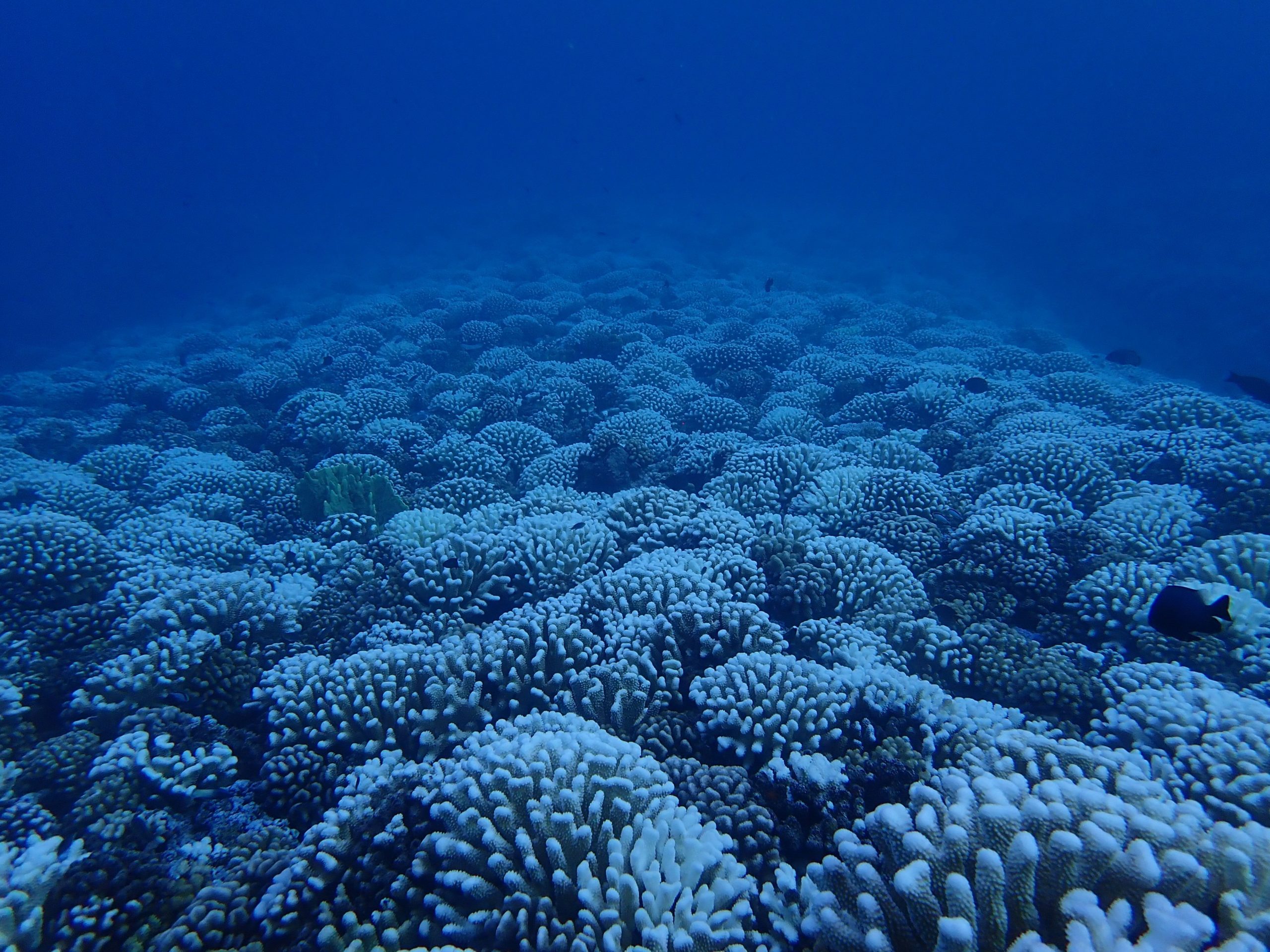Coral reef recruitment on the Great Barrier Reef affected by global warming

During the last global bleaching event (2014-2017), portrayed as the most spectacular in terms of intensity, duration and extent, the Great Barrier Reef lost more than 50% of its reefs. Australian researchers have studied the reproductive potential of corals on the Great Barrier Reef following the mass mortality events, and noticed a decrease of 89% of new coral larvae in 2018 compared to the pre-bleaching.
How do corals reproduce?
Corals use different mechanisms to reproduce. The “asexual” mode of reproduction consists in the production of one (or several) exact genetic copy of a parent individual. However, the most widespread mode of reproduction, called “sexual” involves male and female reproductive cells, which meet either in the coral polyp (brooder) or in the reef environment (broadcaster). Most coral species diffuse eggs and gametes in the water column, compared to the brooder species that produce “planulas” in the case of internal fertilization.
Reef resilience affected by global warming
On the Great Barrier Reef, the spectacular phenomenon of mass spawning (by broadcaster species) is observed every year at the end of the austral spring. Millions of eggs and spermatozoa forming larvae are synchronously distributed in the water column where they will be transported along thousands of kilometers, before attaching themselves to the substrate, forming a new coral colony. At the end of the last bleaching episode (2014-2017), massive coral mortality was reported on the Great Barrier Reef, including more than 75% of tabular and branching species of the genus Acropora, or species such as Seriatopora hystrix and Stylophora pistillata.
These fast-growing species dominate most tropical reefs in the Indo-Pacific regions and play a key role in structuring reef ecosystems. They also represent most of the so-called “broadcaster” species that participate in the external fertilization of the reefs, as well as a greater “genetic” diversity. The drastic transformation of coral assemblages on the Great Barrier Reef will therefore greatly influence the resilience and fate of coral reefs in Australia.
A team of Australian scientists examined the relationship between adult coral stocks and larval recruitment rates within different reef areas along the GBR following the last bleaching episodes (2016-2017). Shortly before the start of the spawning events, the researchers disposed settlement tiles within the reefs to facilitate the adhesion and colonization of new recruits. A total of 1000 tiles were implemented among 17 reefs in 2016 and 2017. Eight weeks following the tile implementation, the number of new coral recruits was quantified via microscopy and compared to data from previous decades. Recruitment rates averaged 11% , further representing a loss of 89% of new recruits compared to the years preceding the 2016-17 bleaching episodes. For an average of 40 larvae present per tile before 2016/2017, only 5 on average colonized the substrate in 2018. The recruitment rate of coral larvae was correlated with the abundance of adult individuals, particularly low in the northern part of the Great Barrier – the area that was the most impacted by bleaching episodes.
The Great Barrier Reef represents the largest reef ecosystem worldwide (2,300 km), home to a staggering biodiversity that promotes the resilience of its biotopes. Yet, these findings demonstrate that back-to-back bleaching events not only weaken adult stocks individuals but also threaten the rate of coral recruitment, impairing the resilience of various coral species – already threatened by local stressors (i.e marine pollution, overfishing, urbanization, sedimentation and predation by corallivorous organisms).
In Australia, while the government and state of Queensland are investing more than $ 200 million in coral reef conservation each year, fossil fuels accounted for « more than 93% of the country’s primary energy consumption in 2016», according to the International Energy Agency (IEA), the only solution to combat global warming and to reduce human footprint on Earth’s ecosystems is to reduce the global greenhouse gas emissions to zero.
Illustration of coral reproduction (source : coraux.univ-reunion.fr/)

Coral bleaching of a coral reef in Moorea, French Polynesia – April 2019 (photo credit : Kelly Speare)

Vidéo on mass coral spawning : https://www.youtube.com/watch?v=4ZI_dGa6C9g

